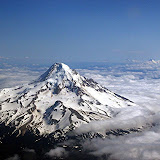MENTOR - Use your 'Visual Yardstick' to judge Distance-to-Clouds

Mentor
Learning to judge distances from clouds can be hard in the beginning of your flight career. Here are three techniques for developing your own 'Visual Yardstick.'
If you know your altitude above the ground, or the length of a nearby runway you see on the ground, or the height of a mountain ridge or tower that rises at least 1,000 feet above the surrounding terrain, you can use any of the three to develop your own 'visual yardstick.'
The key is using visualization, which gets better as you practice. Say you are 2,000 feet above the ground. Look at that distance. envision a red hot laser beam, straight down, or a huge yardstick. Next, mentally tip that yardstick up 90 degrees and swing it around. Would it reach that nearby cloud? Would it reach through or fall short? It may help to envision a square, with the distance down being one defining leg and the horizontal distance being another. You know the difference between a rectangle and a square. Do the two envisioned legs between you, the cloud and the ground form two sides of a rectangle or a square? This is a very useful way to judge cloud distance.
Another way is using the length of a runway you see on the ground. Let's say you can see a runway your chart says is approximately 4,000 feet long. Imagine the Jolly Green Giant coming along and picking up the runway. How many of those runways would fit between you and the cloud? 2 runways would be 8,000 feet. Half a runway would be 2,000 feet. See how it works?
Another way to develop a visual yardstick is with a tower or a ridge that is a known height above the surrounding terrain. On a close scale, you can use the size of your own aircraft. It is likely the wingspan of your aircraft is around 3o feet. Suppose it is 32 feet from tip to tip. Three of your aircraft flying wing to wing in tight formation would be 100 feet. If you are this close to a cloud in VFR conditions, you'd better be taking steps to get farther away!
The point to all of this is that you can use known object sizes in your visual field of view to estimate distances to other objects. Any visual skills you can develop will help improve your technique and this one is tried and true by many pilots over many years.
Onward & Upward! ~ rfb









1 comment:
Who knows where to download XRumer 5.0 Palladium?
Help, please. All recommend this program to effectively advertise on the Internet, this is the best program!
Post a Comment